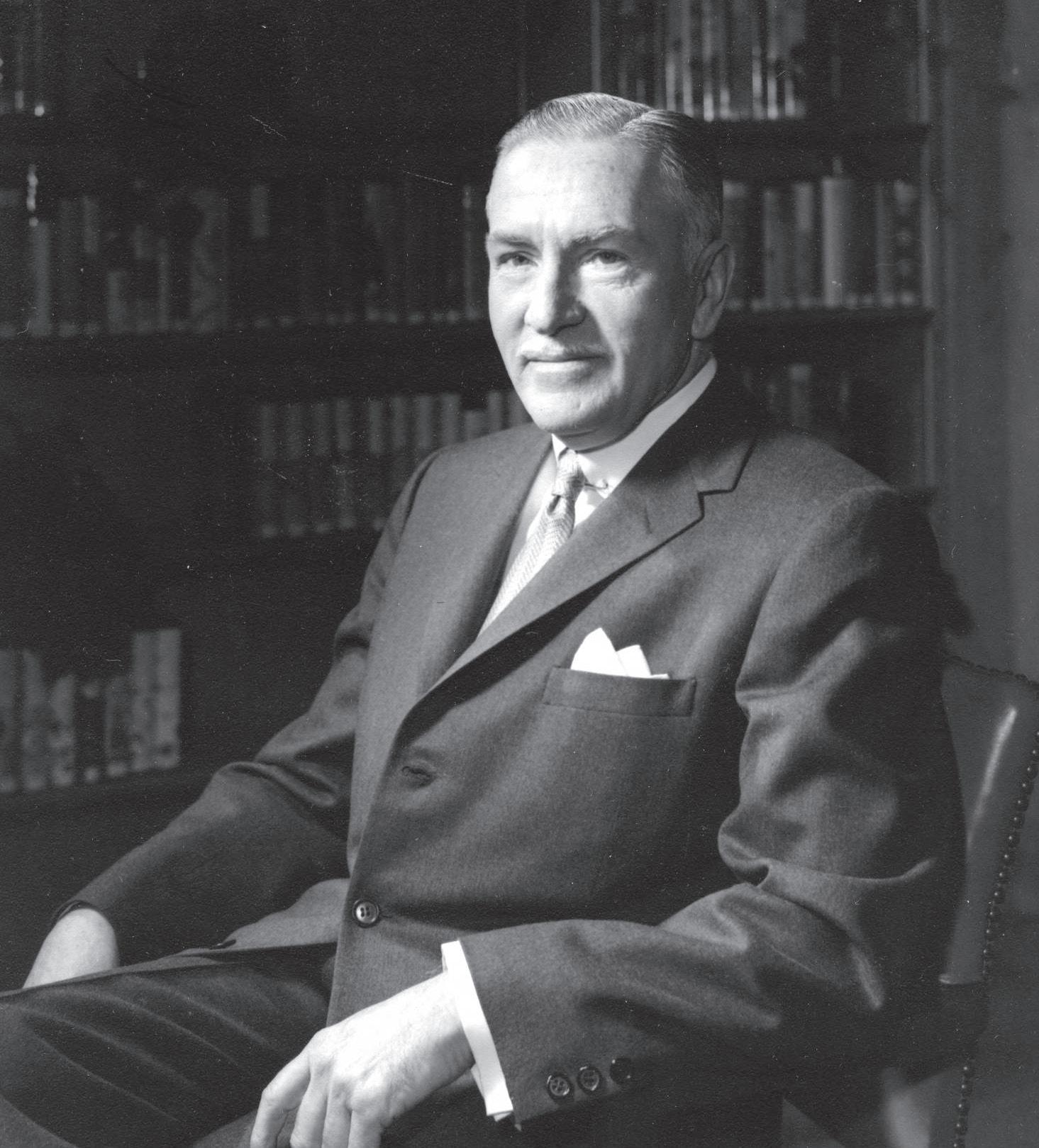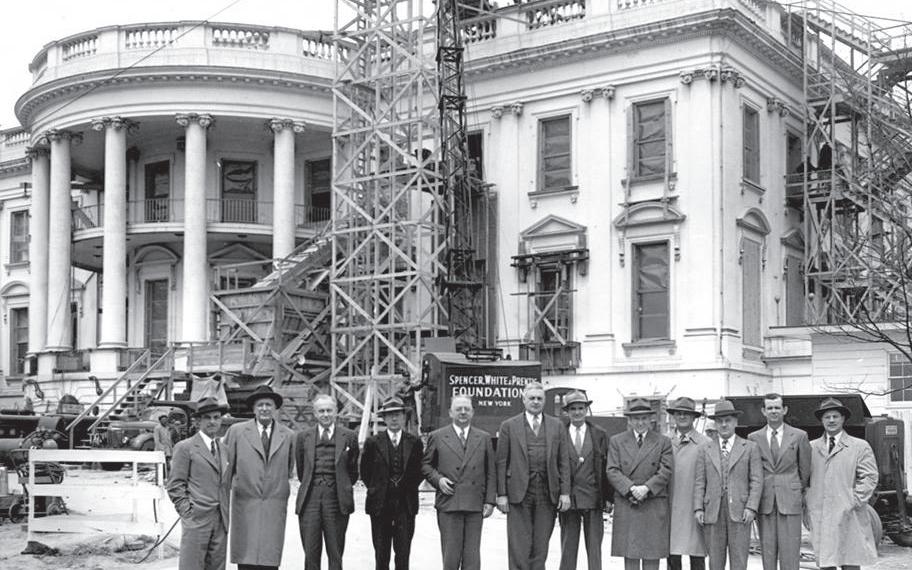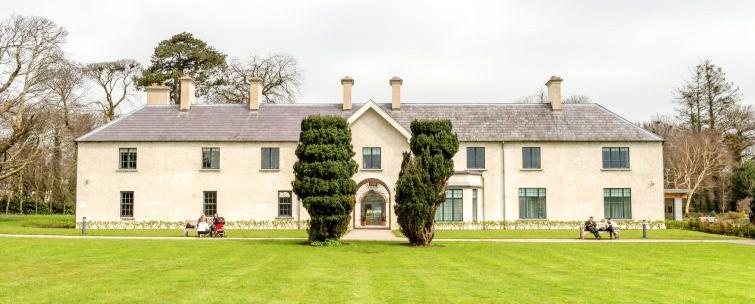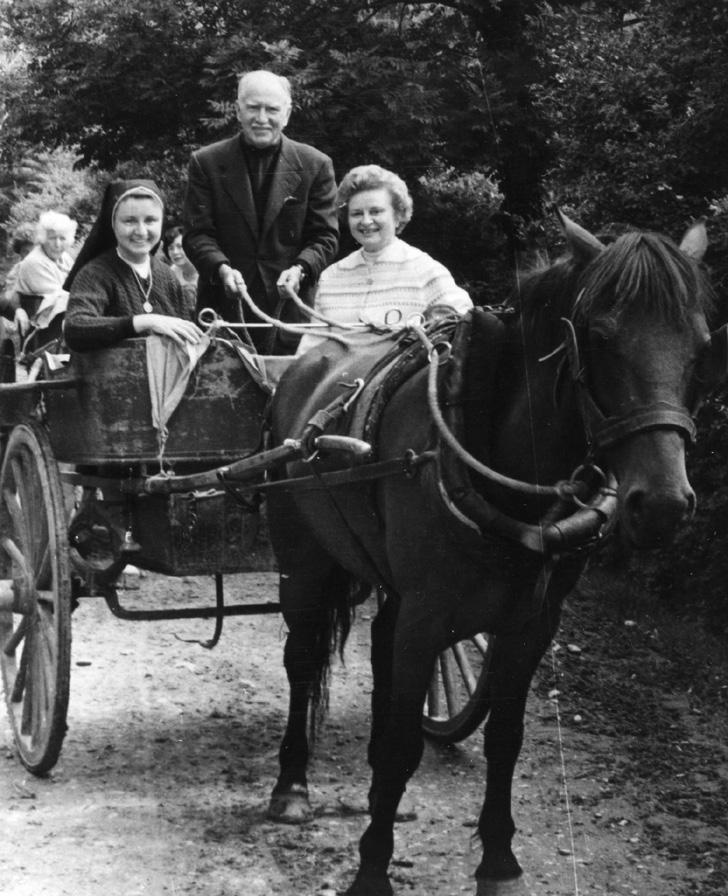
6 minute read
Gap of Dunloe Trip
The man who built Washington
This is the life story of the great John McShain, a multimillionaire philanthropist who bestowed Killarney with ‘the greatest gift any town could receive’. Yet sadly no statue or street bears his name.
John McShain was born on December 21 1898 on Appletree Street in Philadelphia. His parents (John and Catherine) had both emigrated from Ireland. John Sr. had become involved in the construction business when he arrived in Philadelphia in the early 1880s. By the late 1890s, he was moderately well-established as a builder of Catholic churches, schools, rectories, and convents. John Jr. attended various Catholic schools and graduated in 1918. He then spent a year at Georgetown University. When his father died during his sophomore year he withdrew from college and took over his father’s building business. Most of John McShain’s early projects were church-related as he specialized in building Catholic Parochial schools, convents, and rectories. On May 28 1927 John McShain married Mary Horstmann, daughter of Ignatius Horstmann, a Philadelphia clothing manufacturer and Union League Republican. In the years after his marriage, John McShain established himself as one of Philadelphia’s most important builders. In the early 1930s, he began bidding on Washington DC jobs.
John McShain and Mary Horstmann 1927
John and Mary in Killarney
John McShain was responsible for the reconstruction of the White House, the building of the Jefferson Memorial, the Pentagon and the John F Kennedy Centre amongst others ...
His firm became one of the largest construction companies in the United States. In Philadelphia, John McShain was active in Republican Party politics. However, in Washington he maintained both business and social relationships with Democratic Presidents Franklin D. Roosevelt, Harry Truman, and John Kennedy. After the White House renovation was completed in 1951, John McShain began to have health problems. His doctor recommended that he take up horse racing as a hobby.
In 1952 he purchased a stable with four horses in central New Jersey which he called Barclay Stables. McShain’s horses were extremely successful. In 1957, Ballymoss won the Irish Derby, the English St. Leger, the Coronation, the Eclipse Stakes, the King George and Queen Elizabeth, and Arc de Triomphe races. Gladness won the Sunninghill stakes and Ascot Champion Stakes.


How can you buy Killarney?
In 1957 John McShain was part of a syndicate that purchased the 8,300-acre Kenmare estate in Killarney from Mrs Beatrice Grosvenor, niece of the 7th Earl of Kenmare. In late 1959, John McShain bought out his partners and became the sole owner of a large portion of modern-day Killarney.
A Brief Estate History
Kenmare House was originally built in the 1720s and demolished in 1870s. In that same year The Earl began construction of the new Killarney House, built on higher ground. Shortly after its completion in 1879, the house burnt down and was rebuilt. Again, in September 1916 the house was destroyed. Instead of rebuilding again, Valentine Browne, 5th Earl of Kenmare, renovated the original 18th century stable block of what was the Kenmare Estate. Here is where their family resided, also naming it ‘Kenmare House’. John McShain spent more than three years modernising the estate, which at first was used primarily as a summer residence. As the years went by John McShain and his wife Mary spent more and more time at Killarney. By the late 1960s, he was spending more than half the year in Ireland. McShain, of course, kept in touch with his offices in Philadelphia, Baltimore, Washington, and Trenton. John was a deeply religious man and a devout practicing Catholic. His only child, Pauline, entered the Convent of the Holy Child Jesus at New Sharon, Pennsylvania on September 25, 1946 and spent her career as a nun doing educational and counselling work for the Catholic Church. In 1944 John McShain established John McShain Charities, and during the next forty five years he transferred most of his assets to the Charities, which made substantial donations to Catholic colleges and parochial schools, as well as to Philadelphia-area cultural institutions.
Gift of Killarney
In 1973, the family made a gift to the nation of Innisfallen Island and the ruins of its historic abbey. They also gave Ross Castle to the guardianship of the State. Realising that the Killarney Estate was the property most desired by the Government, the McShains decided, in 1979, to turn over the estate for a nominal sum on the understanding they would retain a life tenancy of the house and some acreage. Before signing the agreement, they insisted on the condition that the lands would be incorporated into Killarney National Park in perpetuity. They retained Killarney House and its grounds for their own use, which also was eventually gifted to Killarney and its people. From the day John and Mary had first seen the estate in 1958, they were enamoured by its view of lakes and mountains, and the peacefulness of its paths. Once they had completed the remodeling of the interior of the house, they realised that Killarney was a place where John could finally relax after years of intense pressure from his business interests. But he and Mary were also eager to share the beauty of their new home with family and friends. Among their earliest houseguests, in January 1962, were Sean T. O’Kelly and his wife Phyllis, who returned for another visit in 1964. It was here in Killarney House that the McShains chose to spend their last years, John dying in 1989 and Mary in 1998. As previously arranged, the entire estate became part of the Killarney National Park at the time of Mary’s death. Since then, the distinctive gates and railings of the Killarney House estate have been restored to the style of the Earls of Kenmare, recalling the name by which the estate has always been known to the locals - The Golden Gates. In 1999 the government announced ambitious plans to restore the house, yet for eighteen years the famous golden gates remained closed. Eventually the restoration was completed and John and Mary McShains vision was complete when Killarney House was opened to the public in 2017.
Everyday Killarney
On a daily basis locals and tourists alike stroll the tree-lined walks that meander through the National Park from the demesne to the 15th century fortress of the O’Donoghues’ Ross Castle. The woodlands that stretch from the town to lakes team with wildlife. We hold high on our list of local treasures the Middle and Lower lakes, both of which the McShains bestowed on us, Browne island and legendary Innisfallen Island and its historic Monastery. John McShain’s gift is in daily use, but nowhere of prominence do I see a tribute or plaque. In many travels abroad I have witnessed museums dedicated, statutes in town squares, tree-lined boulevards named to honour great philanthropists. John McShain deserves more from Killarney.
Think about what it would be like without Ross Castle, Killarney House, The Demesne, Innisfallen Island, the lakes ... it’s unthinkable.
Sadly, John and Mary McShain’s only child Sr Pauline ‘Polly’ McShain passed away earlier this year, without seeing her family’s legacy celebrated with a permanent memorial. I salute them, and hope in my lifetime to see a suitable tribute erected in their honour.
by Damien Switzer SWITZER ARCHIVE











